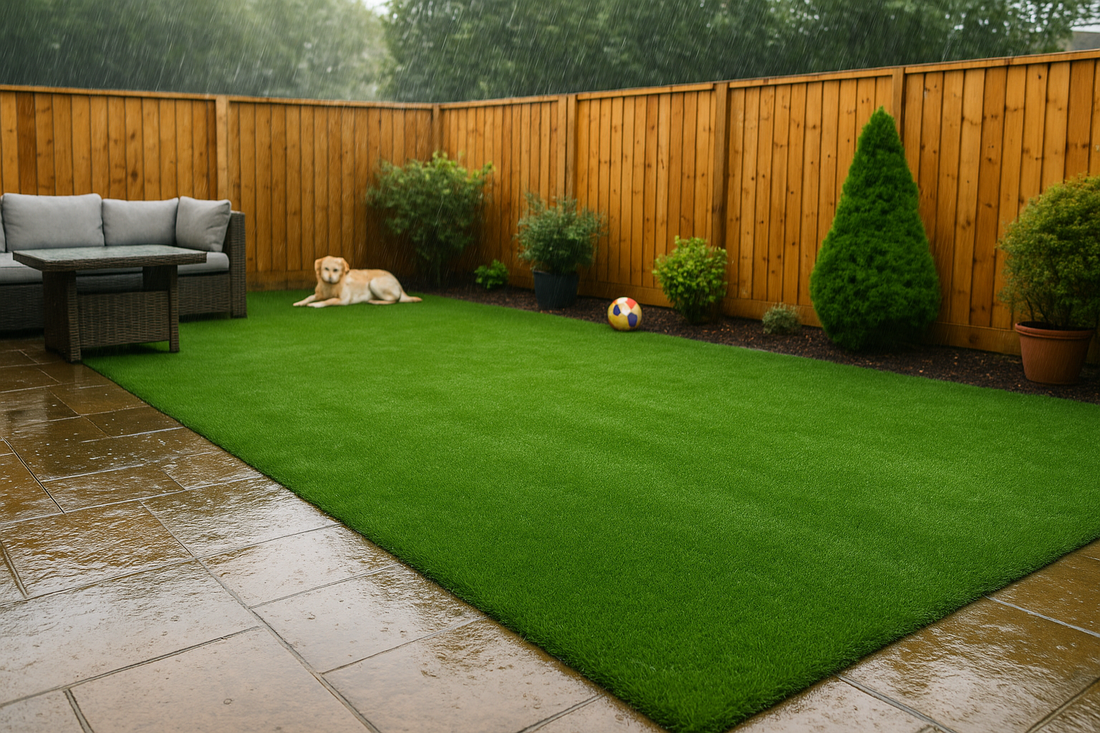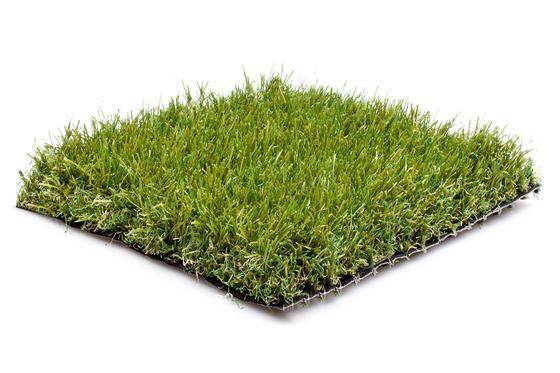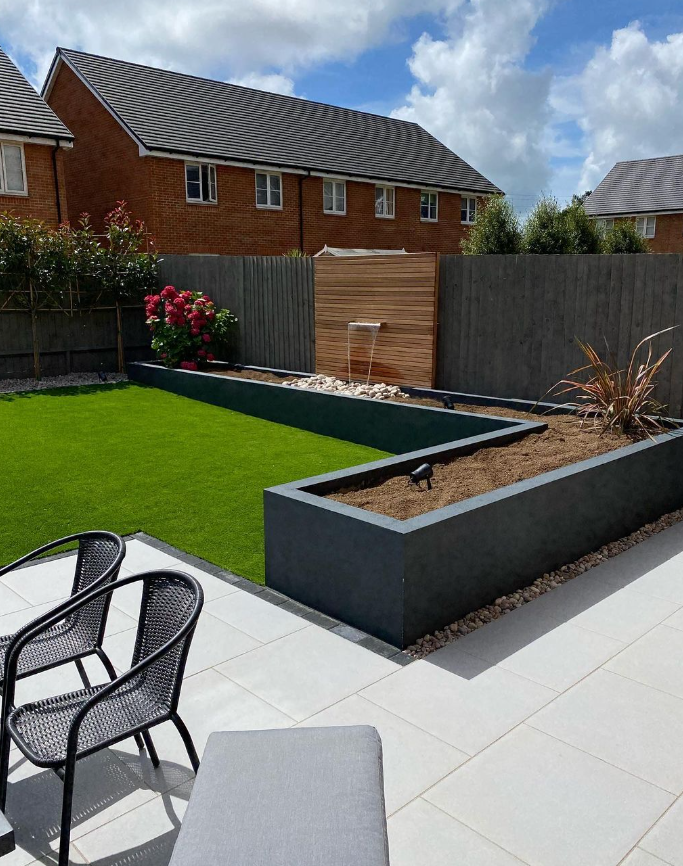
Heavy Rain and Artificial Grass: A Quick Guide for Homeowners
So, you’ve made the switch—or you’re thinking about it—and now there’s that one nagging thought: what actually happens to artificial grass in heavy rain? Will it puddle up like a sponge, or hold its shape like nothing happened?
The good news is, artificial grass drainage is usually spot on…when it’s installed right. In fact, most modern turf comes with a permeable backing that lets water run through with barely a hiccup. That said, if you’ve ever noticed water pooling or felt unsure about what’s going on underneath the surface, you’re not alone.
This quick guide clears up what to expect from artificial grass in heavy rain, and how to keep things draining smoothly with just a bit of regular care and smart groundwork.
Understand How Heavy Rain Affects Artificial Grass

Water pooling risks and permeable backing
Here’s what usually causes concern: artificial grass water pooling. It’s rarely the grass itself—that’s typically got perforations throughout the backing to help with flow. The real issue crops up when water’s got nowhere to go underneath. Without that built-in drainage, even the best turf will start to misbehave.
Luckily, most quality options come with a permeable artificial grass design, made to shift water straight through the backing. Still, if the backing’s blocked by dirt or installed flat on poor ground, those holes won’t help much. And that's when pooling starts becoming a problem.
Impact on surface drainage and underlying layers
It’s not just the grass—what you build beneath it makes a massive difference. A well-laid sub-base, like compacted MOT Type 1, helps form a stable, breathable layer that pushes water away. If that base isn’t there or isn’t levelled properly, water might sit beneath the grass, causing soggy patches or even soft dips over time.
So if you're asking, “does artificial grass drain water effectively?”—yes, it does. But only if what's underneath helps it along. Think of it as a team effort between the turf and the groundwork.
Choose Proper Drainage Solutions
Install a suitable sub-base and perforated pipes
If your garden gets more rain than it knows what to do with, you’ll want to sort the base before anything else. A compacted layer of MOT Type 1 is a solid start—it forms a free-draining foundation that doesn’t shift or clog. On heavy clay soil or on sloped ground, adding perforated drainage pipes underneath can help move excess water away more quickly, reducing the risk of artificial grass water pooling after storms.
As part of your broader garden drainage solution, this setup means the grass layer stays dry on top—no puddles, no mushy patches—just a surface that feels good underfoot, rain or shine.
Test drainage flow before final installation
Before you roll out the turf, it’s a smart idea to test how water moves through the base. Hose it down and watch where it goes. If it drains away evenly, that’s a good sign. If it starts collecting in spots, that’s your cue to tweak the grading or rework compacting.
This small step is often skipped, but it makes a big difference, especially for DIYers. It gives you peace of mind knowing your artificial grass drainage setup is working from the ground up.
Perform Regular Cleaning and Maintenance

Remove debris to prevent blockages
Even with a solid base and permeable artificial grass, things can go wrong if the surface gets clogged. Fallen leaves, moss, dirt, or pet hair might seem harmless, but over time they can block those drainage holes. And that’s when problems like soggy patches or water sitting on the grass start to show up.
A quick brush every couple of weeks—especially in autumn or after a storm—can keep things flowing properly. It's one of the easiest ways to stay ahead of artificial grass maintenance after rain.
Rinse with clean water to flush sediment
Sometimes, even if it looks clean, fine sediment can build up where you can’t see it. Giving your lawn a gentle rinse with a hose once a season helps wash out anything that’s settled in. No need for pressure washers—just a simple spray to keep those drainage holes clear.
If you’ve had a spell of dusty weather or a particularly mucky winter, this small step can help your turf stay fresh, both in look and performance.
Inspect and Repair After Storms
Check seams and edges for lifting
Heavy downpours can sometimes test the strength of how your grass was laid. After a rough patch of weather, take a few minutes to walk the area and check the seams and edges. If anything looks like it’s lifting or pulling away, it’s better to catch it early before it gets worse.
Loose turf can let in water, dirt or weeds, and eventually damage the backing. A quick re-glue or pin-down often does the trick and keeps everything tidy.
Refill infill materials if displaced
Rain can sometimes shift the infill—that fine layer of sand or rubber that helps the grass blades stay upright and aids with drainage. If areas feel soft or look flat after a storm, it could mean the infill’s moved.
Topping it back up helps maintain structure, support, and drainage. It’s a small job that can make a big difference to how your lawn handles the next batch of wet weather.
Plan for Long-Term Durability

Use UV-stable, weather-rated turf materials
Not all turf is built the same, and over time, that really shows. Choosing UV-stable, weather-rated artificial grass means you’re investing in something that can handle more than just a sunny day. It stays strong through cold snaps, wet spells and heatwaves—without fading, curling or becoming brittle.
If you’re installing it yourself, double-check that your chosen grass is made for UK conditions, especially when rain’s a regular guest.
Schedule occasional professional inspections
Even the best DIY jobs benefit from a once-over now and then. If you notice persistent puddles or if the turf sees heavy foot traffic, getting a pro in every few years can spot small issues before they become big ones. It’s a bit like an MOT—but for your garden.
Need quality turf that’s built to handle British weather? Contact us at Tuda Grass today if you're sorting your garden space this season.


